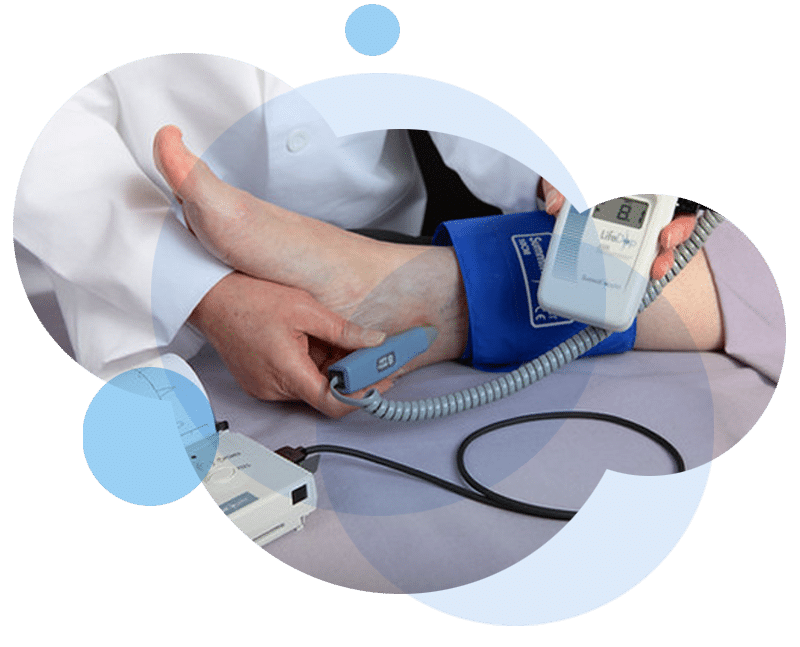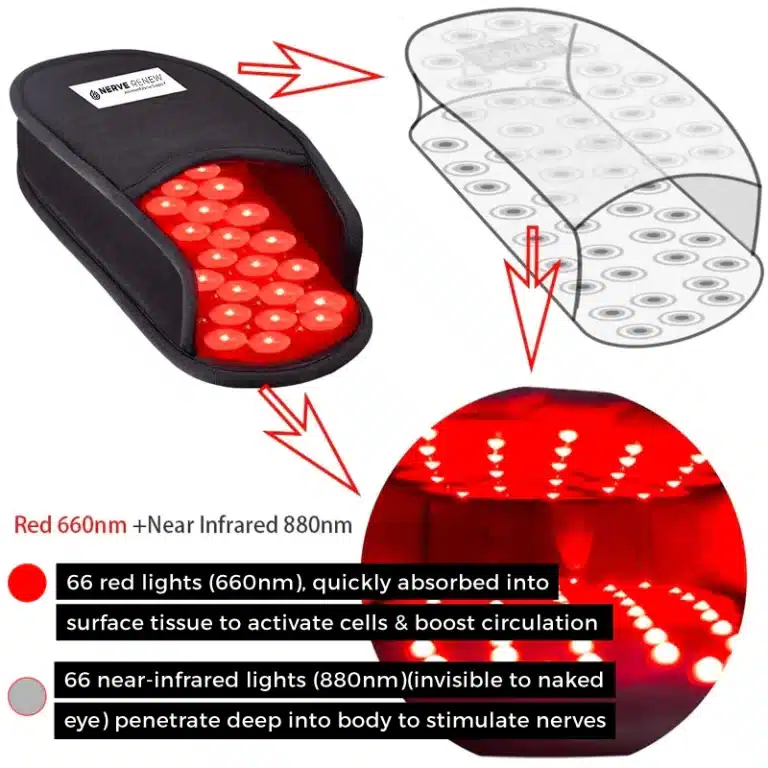Peripheral arterial disease (PAD) is a common circulatory problem in which narrowed arteries reduce blood flow to the limbs, usually the legs. This condition is not only a major cause of leg pain and difficulty in walking, but it can also increase the risk of heart attack and stroke. Early diagnosis and treatment of PAD are essential to improving the quality of life and preventing serious complications.
Peripheral arterial testing plays a crucial role in diagnosing PAD and determining the most effective treatment plan. Various diagnostic strategies, such as ankle-brachial index (ABI) measurement, Doppler ultrasound, and angiography, are employed to assess the severity and extent of arterial blockages. Understanding the risk factors and implementing prevention strategies can significantly reduce the prevalence of PAD and its associated health risks.
Key Takeaways
- PAD can lead to serious complications if left undiagnosed and untreated.
- Diagnostic tests like ankle-brachial index, Doppler ultrasound, and angiography are essential for assessing arterial blockages in PAD patients.
- Awareness of risk factors and proper prevention strategies can help reduce the incidence of PAD and improve overall vascular health.
Epidemiology
PAD affects about 8.5 million people aged 40 and above in the United States alone. The prevalence of PAD increases with age, affecting around 20% of individuals over the age of 60. It is more often seen in people with a history of smoking, diabetes, high blood pressure, and high cholesterol. Additionally, PAD is known to have a higher prevalence in African American and Hispanic populations.
Pathophysiology
The primary cause of PAD is atherosclerosis, which is the buildup of fatty deposits (plaque) in the arterial walls. This plaque buildup results in the narrowing and hardening of the arteries, leading to decreased blood flow to the affected areas. Reduced blood flow can result in the following symptoms:
- Leg pain when walking (claudication)
- Coldness or numbness in the lower extremities
- Non-healing sores on the legs or feet
- Discoloration of the skin
Plaque Rupture and Thrombosis
Complications of PAD may arise if the plaque ruptures, exposing its core to the bloodstream. This can cause a blood clot to form at the site of the rupture, potentially leading to complete blockage of the artery and the possibility of severe tissue damage or even tissue death (necrosis).
Who should be tested for peripheral artery disease?
The early detection of PAD is significantly valuable as it can alert healthcare providers to the presence of atherosclerosis in other parts of the body, potentially preventing heart disease or stroke. This makes screening for PAD crucial for those experience nerve pain.
Numerous factors contribute to the development of PAD, some of which include age, diabetes, high blood pressure, high cholesterol, smoking, and family history of cardiovascular disease.
People with diabetes, a history of smoking, or showing symptoms like pain or numbness in their legs, shiny skin on their feet, and slow-healing sores should consider undergoing peripheral artery testing.
PAD Symptoms
While up to 40% of people with PAD may not experience any symptoms, the following warning signs should prompt consideration for PAD screening:
- Pain in the legs that is relieved by resting
- Smooth, shiny skin on the lower legs and feet
- Skin that is cool to the touch
- Wounds on the feet and legs that don’t heal, or that heal very slowly
- Constant leg pain, tingling, burning, or loss of all sensation
Screening Recommendations:
Adults aged 50 and older, as well as those aged 40 and older with risk factors (particularly diabetes and a history of smoking), should consider undergoing ABI testing. For individuals with risk factors, it is advised to receive a PAD screening annually.
PAD Testing

Peripheral arterial testing primarily involves the use of the ankle-brachial index (ABI) test, which is a simple, non-invasive procedure that compares the blood pressure in a patient’s arms to that in their legs.
This section discusses diagnostic strategies for PAD, focusing on Ankle-Brachial Index (ABI) testing.
Ankle-Brachial Index (ABI) Testing
An ABI test is a easy, quick, and non-invasive procedure used to determine the risk of PAD. During the test, blood pressure cuffs are placed around the upper arms and ankles, measuring the systolic blood pressure in the limbs using a small ultrasound device. The blood pressure in the arms is compared to that in the legs, resulting in a calculation called the ankle-brachial index (ABI). The ABI helps technicians assess the risk of PAD and whether follow-up with a healthcare provider is necessary.
Interpreting ABI Results:
- Normal range: 1.0 to 1.3
- Abnormal range: 0.9 or below / 1.4 and over
If the ABI results fall within the abnormal range, the individual should consult their physician for further evaluation and potential management. Regardless of the ABI outcome, it is essential to share the screening results with a healthcare professional.
Frequently Asked Questions
What are the common symptoms of peripheral artery disease?
Patients with peripheral artery disease (PAD) may experience a variety of symptoms, including leg pain, cramping, or fatigue, particularly during physical exertion. Some individuals may also suffer from numbness, weakness, and coldness in their lower extremities. In more severe cases, patients may experience ulcers, discoloration, and even gangrene. It is essential to consult with a healthcare professional if you suspect you have PAD.
What self-care measures can be taken for peripheral artery disease?
Individuals diagnosed with PAD can take several self-care measures to manage their condition and improve their overall health. These steps generally involve making lifestyle changes, such as engaging in regular exercise, maintaining a healthy diet, avoiding tobacco use, and monitoring blood sugar levels for those with diabetes. Additionally, proper foot care is essential for those with PAD to prevent injuries and infections.
What medications are typically prescribed for peripheral artery disease?
Medications for PAD usually aim to control symptoms, lower the risk of complications, and improve blood flow. Commonly prescribed medications include antiplatelet agents (such as aspirin or clopidogrel) to reduce blood clot formation, cholesterol-lowering drugs (statins), and blood pressure medications (such as ACE inhibitors and beta-blockers). In some cases, medications to treat claudication may be recommended, such as cilostazol. Healthcare providers will assess each patient’s unique needs and prescribe the most appropriate treatment plan. Visit the Mayo Clinic’s PAD treatment page for more information.
What are the primary indications for undergoing a peripheral arterial exam?
A peripheral arterial exam may be indicated for individuals experiencing symptoms suggestive of PAD, such as leg pain, numbness, and coldness in the lower limbs. Additionally, the test may be recommended for patients with risk factors for PAD, including a history of smoking, diabetes, high blood pressure, high cholesterol, or a family history of vascular issues.
What is the recommended sleeping position for patients with peripheral artery disease?
Patients with peripheral artery disease should avoid sleeping with their legs crossed or in positions that may restrict blood flow to their lower extremities. Instead, they should aim to keep their limbs elevated to help promote circulation. Using a pillow to elevate the affected extremities while sleeping can help alleviate discomfort and reduce swelling.
It is crucial for PAD patients to follow their healthcare provider’s recommendations for sleeping positions and overall management of their condition.








